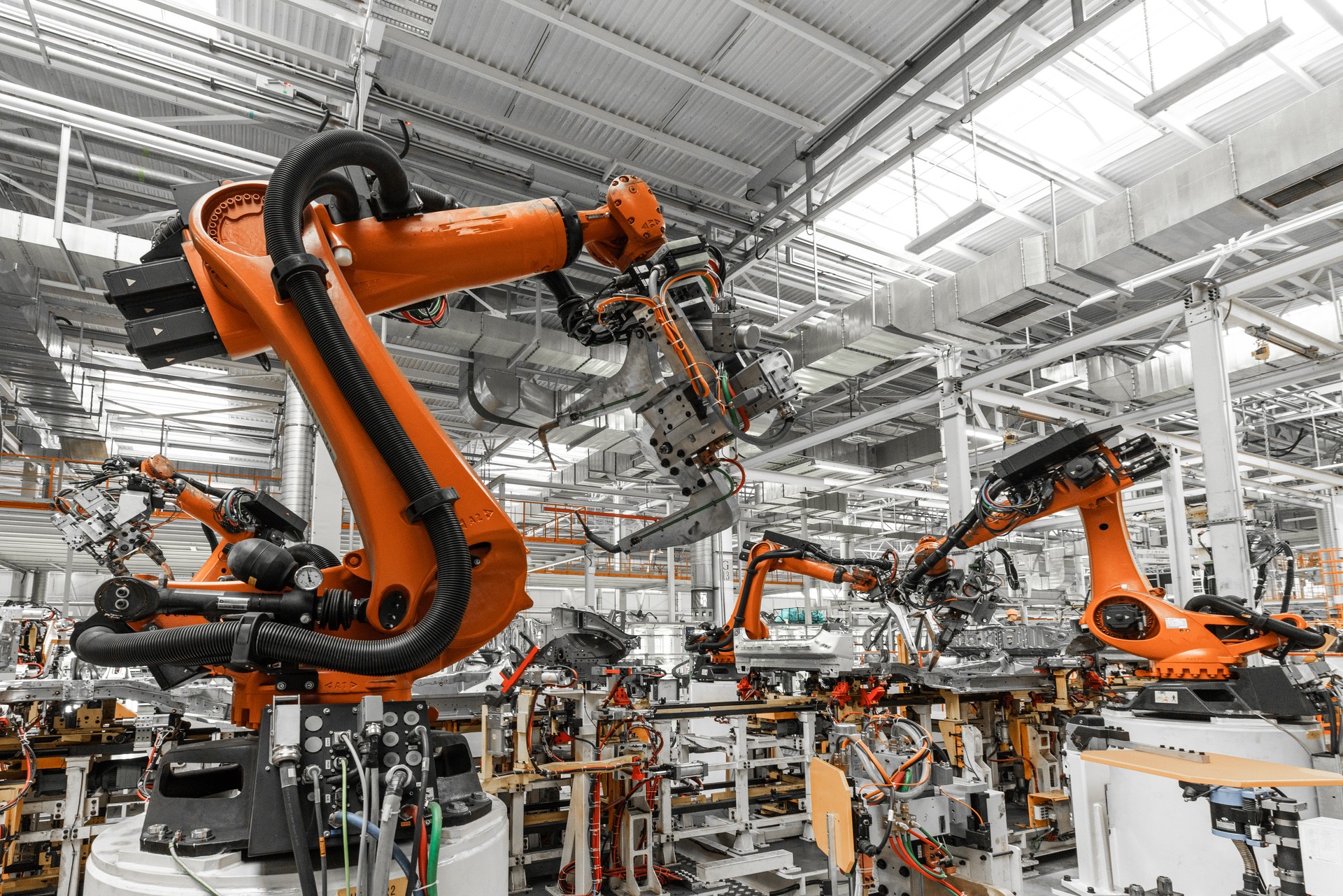Machine programming, also known as low-level programming or assembly language programming, requires the creation of instructions for a computer in machine language. Machine language is the lowest level of programming language and is an essential component of computer programming. Understanding machine language is critical for programmers because it allows them to develop software that can communicate directly with the hardware of a computer. Without machine language, there would be no way for programmers to write software that can interact with the low-level hardware of a computer, which is necessary for many types of applications. Therefore, learning machine language is an important step in becoming a proficient computer programmer.
Machine language, also known as machine code, is made up entirely of binary digits, specifically 0s and 1s. These instructions are directly understood by the computer’s central processing unit (CPU) and are the building blocks of all computer programs. Understanding machine language is critical for programmers, as it allows them to write efficient and optimized code that can be executed quickly and accurately. By learning about machine language, programmers can gain a deeper understanding of how computers work and use this knowledge to create innovative and powerful software applications.

Backbone of machine programming
Machine programming is the process of writing instructions for a computer in machine language. Machine language is a low-level programming language that is made up of binary digits (0s and 1s). Each binary digit represents a single instruction that the computer’s central processing unit (CPU) can understand.
Machine language is the most basic form of programming language. It is the language that the computer’s CPU can directly understand, so it is the most efficient language for writing programs that will run quickly. However, machine language is also the most difficult language to write. It is difficult to remember the binary codes for each instruction, and it is easy to make mistakes.
For these reasons, machine programming is not commonly used today. Most programmers use higher-level programming languages, such as C++, Java, or Python. These languages are easier to write and understand, and they can be translated into machine language by a compiler.
However, there are still some cases where machine programming is necessary. For example, some embedded systems, such as those used in medical devices or car engines, are programmed in machine language. This is because these systems need to be very efficient, and they cannot afford the overhead of a higher-level programming language.

The inspiring history of programming
The history of machine programming can be traced back to the early days of computing. In the 1940s, the first computers were programmed using machine language. Machine language is a low-level language that is made up of binary digits (0s and 1s). Each binary digit represents a single instruction that the computer’s central processing unit (CPU) can understand.
One of the first people to program in machine language was Ada Lovelace. In 1843, Lovelace wrote an algorithm for the Analytical Engine, a theoretical computer that was designed by Charles Babbage. Lovelace’s algorithm is considered to be the first computer program ever written.
In the 1950s, assembly language was developed as a more readable alternative to machine language. Assembly language is a low-level language that uses mnemonics instead of binary digits. This made it easier for programmers to write programs, but it was still a very difficult and time-consuming process.

In the 1960s, high-level programming languages were developed. High-level languages are more abstract than machine language or assembly language. This makes them easier to write and understand, but they are also less efficient.
Today, high-level programming languages are the most widely used languages for programming computers. However, machine language and assembly language are still used in some specialized applications, such as embedded systems.
Here are some of the key events in the history of machine programming:
- 1843: Ada Lovelace writes an algorithm for the Analytical Engine, which is considered to be the first computer program ever written
- 1949: Assembly language is developed as a more readable alternative to machine language
- 1957: FORTRAN, the first high-level programming language, is developed
- 1964: COBOL, another popular high-level programming language, is developed
- 1970: The C programming language is developed
- 1983: The C++ programming language is developed
- 1991: The Java programming language is developed
How to start learning machine programming
To begin machine programming, one must first learn the basics of machine language. This includes comprehending the binary code for each instruction and understanding the different types of instructions available. Various resources are available online and in libraries to aid in learning machine language.
After gaining a basic understanding of machine language, the next step is to choose a platform to program on. There are multiple platforms available, such as the Intel x86, ARM, and MIPS platforms, each with its own advantages and disadvantages.

Once a platform has been selected, finding a tutorial or book that is easy to follow and well-written can assist in learning how to program on that platform. To avoid feeling overwhelmed, starting with simple programs is recommended. As proficiency increases, more complex programs can be attempted.
Here are some of the best machine programming resources you may use on your learning:
Using a debugger is also helpful in debugging code and finding errors. Debuggers are tools that allow one to step through code line by line and observe how it is executing.
Finally, the best way to learn machine programming is through practice. The more one practices writing machine language programs, the better they will become.
AI cannot exist without machine programming
The fields of machine programming and artificial intelligence (AI) are inseparable and can work together to achieve powerful and efficient results. Let’s delve into their connection.
Programming AI algorithms
Machine programming is essential for creating the algorithms that drive AI systems. These algorithms involve intricate mathematical computations, data processing, and decision-making. By writing them in machine language, programmers can optimize their performance, making AI systems more capable of handling large-scale data processing tasks.
Low-level optimization
AI applications often demand extensive computational power and real-time processing. Machine programming allows developers to write AI code at a low level, optimizing critical parts of the algorithms for better performance. This is especially critical in AI applications that run on resource-constrained devices like edge devices and Internet of Things (IoT) devices.
AI 101: A beginner’s guide to the basics of artificial intelligence
Accelerating AI hardware
With the emergence of specialized AI hardware like Graphics Processing Units (GPUs) and Tensor Processing Units (TPUs), machine programming plays a crucial role in writing code that takes advantage of these hardware accelerators. By utilizing machine language, programmers can implement AI models that work efficiently on these specialized hardware, resulting in faster and more efficient AI computations.
AI for machine programming
AI techniques, such as genetic algorithms and reinforcement learning, have been applied to machine programming tasks, automating and streamlining the process of writing machine code. AI can optimize code, find bugs, and even generate code based on high-level specifications. This field, called AI for machine programming, aims to reduce the complexity and time required to develop software by using artificial intelligence.

AI-powered code assistance
Recently, AI-powered tools such as GitHub copilot have emerged that help programmers in writing code. These tools use machine learning algorithms to analyze existing codebases, suggest improvements, and auto-complete code snippets. By using AI to enhance code assistance, developers can become more productive and focus on high-level design while leaving repetitive tasks to AI-powered tools.
AI in software testing
Implementing AI algorithms used in software testing requires machine programming. AI can automate testing processes, find bugs, and perform regression testing. Using AI to improve software testing allows developers to identify and fix issues more efficiently, ensuring higher-quality software.
AI applications powered by machine language
AI applications often interact with physical devices, such as robots, autonomous vehicles, and industrial automation systems. The software controlling these devices needs to be written in machine language to achieve real-time responsiveness and low-level control. Machine programming enables developers to build the core components of AI systems that interface directly with the hardware.
To conclude, machine programming and artificial intelligence are deeply interconnected. Machine programming enables efficient and optimized algorithms that power AI systems, while AI techniques can assist in automating and improving the process of writing machine code. Together, these fields drive innovation and advancements in various domains, leading to the development of sophisticated AI applications with real-world impact.
Untouched by hand
Computer-integrated manufacturing (CIM) and machine programming share a deep connection, as they both rely on the seamless integration of computer technology to optimize various aspects of the manufacturing process.
At the heart of CIM lies machine programming, where instructions are written in machine language to control and coordinate the different stages of the manufacturing process. Machine programming allows for precise and efficient control of computer numerical control (CNC) machines, robotic systems, and other automated equipment involved in manufacturing.
The key goal of CIM is to achieve a high degree of synergy among different manufacturing processes, departments, and technologies, ultimately leading to enhanced productivity, efficiency, and competitiveness in the manufacturing industry. By harnessing the capabilities of computers, automation, and communication technologies, CIM offers a holistic approach that optimizes the entire manufacturing lifecycle.
Components of computer-integrated manufacturing
Computer-Integrated Manufacturing is composed of several key components that work together to optimize the entire manufacturing process. One of these components is Computer-Aided Design (CAD), which allows designers and engineers to create detailed digital models of products. This software enables them to visualize and refine the design before producing a physical prototype, resulting in a shorter development cycle and fewer design flaws.
Another essential aspect of CIM is Computer-Aided Manufacturing (CAM), which automates the manufacturing process using computer-controlled machines and tools. CAM software generates instructions for machines, such as CNC machines, to produce the physical components with high accuracy and efficiency. This integration between design and manufacturing ensures a seamless transition from concept to production.
Computer-Aided Process Planning (CAPP) plays a critical role in optimizing the planning and sequencing of manufacturing operations. CAPP uses computer algorithms to determine the most efficient manufacturing processes for specific products, taking into account factors such as material availability, production resources, and time constraints. CAPP streamlines the production workflow, reduces waste, and maximizes resource utilization.
Finally, Computerized Numerical Control (CNC) machines are a vital element of CIM, particularly in modern manufacturing environments. These machines are controlled by computer programs that precisely guide the cutting, shaping, and finishing of raw materials to create complex and precise parts. CNC machines offer increased automation, repeatability, and efficiency, contributing to the overall success of CIM implementation.

Perfectly balanced
CIM provides numerous advantages that significantly impact the manufacturing process:
- Increased productivity: By automating various tasks and streamlining processes, CIM reduces manual labor, leading to increased productivity and shorter production cycles
- Enhanced quality control: The use of computer-guided machines and automated inspection systems in CIM ensures consistent and high-quality products, minimizing defects and errors
- Flexibility and customization: CIM’s integration allows manufacturers to quickly adapt to changing market demands and offer customized products tailored to individual customer requirements
- Real-time data and communication: CIM enables real-time data sharing between different departments, facilitating better coordination, decision-making, and resource allocation
- Cost efficiency: CIM reduces waste, optimizes resource usage, and lowers production costs, making manufacturing operations more cost-effective
- Improved safety: Automation in CIM can reduce the need for human intervention in hazardous tasks, contributing to a safer work environment
While CIM offers significant benefits, its successful implementation comes with challenges:
- Initial investment: Implementing CIM requires substantial upfront investments in advanced hardware, software, and training
- Integration complexity: Integrating various systems and technologies in a cohesive manner can be challenging, requiring skilled personnel and effective planning
- Data security and privacy: With increased digitalization and data sharing, ensuring data security and privacy becomes crucial to protect intellectual property and sensitive information
- Skill requirements: CIM demands a workforce skilled in operating and maintaining complex computer-controlled systems, necessitating continuous training and education
The relationship between computer-integrated manufacturing and machine programming is fundamental to the modern manufacturing landscape. CIM relies on machine programming to bridge the gap between design and production, ensuring that the manufacturing process operates with precision, efficiency, and adaptability. As the manufacturing industry continues to evolve, advancements in machine programming, including the integration of AI and real-time data sharing, will further enhance CIM’s capabilities, leading to increased productivity and competitiveness in a fast-paced and technology-driven world and all you need to do to stay on top of all this is to take the first step to learn machine programming.
Featured image credit: Image by rawpixel.com on Freepik.
- SEO Powered Content & PR Distribution. Get Amplified Today.
- PlatoData.Network Vertical Generative Ai. Empower Yourself. Access Here.
- PlatoAiStream. Web3 Intelligence. Knowledge Amplified. Access Here.
- PlatoESG. Automotive / EVs, Carbon, CleanTech, Energy, Environment, Solar, Waste Management. Access Here.
- BlockOffsets. Modernizing Environmental Offset Ownership. Access Here.
- Source: https://dataconomy.com/2023/07/24/a-beginners-guide-to-machine-programming/



